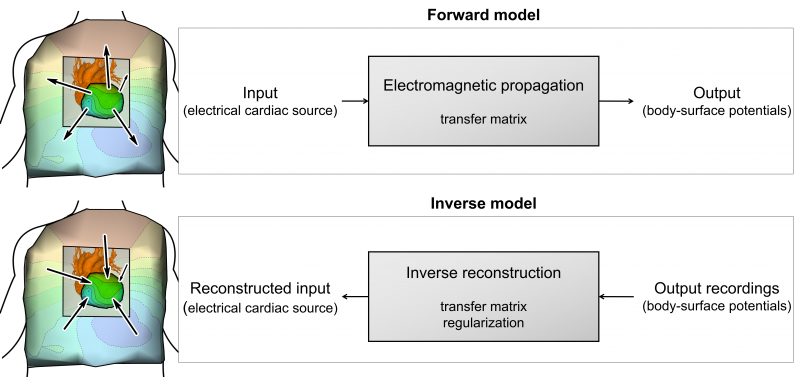Objective The purpose of this study was to evaluate the accuracy of noninvasive reconstructions of epicardial potentials, electrograms, activation and recovery isochrones, and beat origins by simultaneously performing electrocardiographic imaging (ECGI) and invasive epicardial electrography in intact animals.
Background Noninvasive imaging of electrical potentials at the epicardium, known as ECGI, is increasingly applied in patients to assess normal and abnormal cardiac electrical activity.
Methods Body-surface potentials and epicardial potentials were recorded in normal anesthetized dogs. Computed tomography scanning provided a torso-heart geometry that was used to reconstruct epicardial potentials from body-surface potentials.
Results Electrogram reconstructions attained a moderate accuracy compared with epicardial recordings (median correlation coefficient: 0.71), but with considerable variation (interquartile range: 0.36 to 0.86). This variation could be explained by a spatial mismatch (overall resolution was <20 mm) that was most apparent in regions with electrographic transition. More accurate derivation of activation times (Pearson R: 0.82), recovery times (R: 0.73), and the origin of paced beats (median error: 10 mm; interquartile range: 7 to 17 mm) was achieved by a spatiotemporal approach that incorporates the characteristics of the respective electrogram and neighboring electrograms. Reconstruction of beats from repeated single-site pacing showed a stable localization of origin. Cardiac motion, currently ignored in ECGI, correlates negatively with reconstruction accuracy.
Conclusions ECGI shows a decent median accuracy, but variability in electrogram reconstruction can be sizable. At present, therefore, clinical interpretations of ECGI should not be made on the basis of single electrograms only. Incorporating local spatiotemporal characteristics allows for accurate reconstruction of epicardial activation and recovery patterns, and beat origin localization to a 10-mm precision. Even more reliable interpretations are expected when the influences of cardiac motion are accounted for in ECGI.
Please find a pre-print of the paper here.
Reference:

